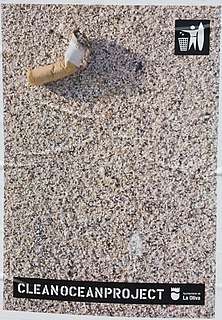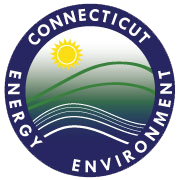Related Research Articles

The Natural Resources Defense Council (NRDC) is a United States-based 501(c)(3) non-profit international environmental advocacy group, with its headquarters in New York City and offices in Washington D.C., San Francisco, Los Angeles, New Delhi, Chicago, Bozeman, and Beijing. Founded in 1970, the NRDC has over 3 million members, with online activities nationwide, and a staff of about 700 lawyers, scientists and other policy experts.

Environmental protection is the practice of protecting the natural environment by individuals, organizations and governments. Its objectives are to conserve natural resources and the existing natural environment and, where possible, to repair damage and reverse trends.

A police dog is a dog that is specifically trained to assist police and other law-enforcement personnel. Their duties include: searching for drugs and explosives, locating missing people, finding crime scene evidence, and attacking people targeted by the police. Police dogs must remember several verbal cues and hand gestures. The most commonly used breeds are the German Shepherd, Belgian Malinois, Bloodhound, Dutch Shepherd, and the retriever breeds. Recently, the Belgian Malinois has become the dog of choice for police and military work due to their intense drive and focus. Malinois are smaller and more agile than German Shepherd Dogs, and have fewer health issues. However, a well-bred working line German Shepherd Dog is just as successful and robust as a Malinois.

United States environmental law concerns legal standards to protect human health and improve the natural environment of the United States. While subject to criticism at home and abroad on issues of protection, enforcement, and over-regulation, the country remains an important source of environmental legal expertise and experience.

Aldicarb is a carbamate insecticide which is the active substance in the pesticide Temik. It is effective against thrips, aphids, spider mites, lygus, fleahoppers, and leafminers, but is primarily used as a nematicide. Aldicarb is a cholinesterase inhibitor which prevents the breakdown of acetylcholine in the synapse. In case of severe poisoning, the victim dies of respiratory failure.

Municipal solid waste (MSW), commonly known as trash or garbage in the United States and rubbish in Britain, is a waste type consisting of everyday items that are discarded by the public. "Garbage" can also refer specifically to food waste, as in a garbage disposal; the two are sometimes collected separately. In the European Union, the semantic definition is 'mixed municipal waste,' given waste code 20 03 01 in the European Waste Catalog. Although the waste may originate from a number of sources that has nothing to do with a municipality, the traditional role of municipalities in collecting and managing these kinds of waste have produced the particular etymology 'municipal.'
Phycomycosis is an uncommon condition of the gastrointestinal tract and skin most commonly found in dogs and horses. The condition is caused by a variety of molds and fungi, and individual forms include pythiosis, zygomycosis, and lagenidiosis. Pythiosis is the most common type and is caused by Pythium, a type of water mould. Zygomycosis can also be caused by two types of zygomycetes, Entomophthorales and Mucorales. The latter type of zygomycosis is also referred to as mucormycosis. Lagenidiosis is caused by a Lagenidium species, which like Pythium is a water mould. Since both pythiosis and lagenidiosis are caused by organisms from the class Oomycetes, they are sometimes collectively referred to as oomycosis.

Environmental crime is an illegal act which directly harms the environment. These illegal activities involve the environment, wildlife, biodiversity and natural resources. International bodies such as, G8, Interpol, European Union, United Nations Environment Programme, United Nations Interregional Crime and Justice Research Institute, have recognised the following environmental crimes:

Phenothrin, also called sumithrin and d-phenothrin, is a synthetic pyrethroid that kills adult fleas and ticks. It has also been used to kill head lice in humans. d-Phenothrin is used as a component of aerosol insecticides for domestic use. It is often used with methoprene, an insect growth regulator that interrupts the insect's biological lifecycle by killing the eggs. Phenothrin is the active agent in the branded product Raid Fly and Wasp Killer.
In environmental engineering, the flood mitigation involves the management and control of flood water movement, such as redirecting flood run-off through the use of floodwalls and flood gates, rather than trying to prevent floods altogether. It also involves the management of people, through measures such as evacuation and dry/wet proofing properties. The prevention and mitigation of flooding can be studied on three levels: on individual properties, small communities, and whole towns or cities. The costs of protection rise as more people and property are protected. The US FEMA, for example, estimates that for every $1.00 spent on mitigation, $4.00 is saved.

Cyromazine is a triazine insect growth regulator used as an insecticide. It is a cyclopropyl derivative of melamine. Cyromazine works by affecting the nervous system of the immature larval stages of certain insects.
"Environmental Quality" is a set of properties and characteristics of the environment, either generalized or local, as they impinge on human beings and other organisms. It is a measure of the condition of an environment relative to the requirements of one or more species, any human need or purpose.

Reorganization Plan No. 3 was a presidential directive submitted to the United States Congress on July 9, 1970 by President Richard Nixon establishing the Environmental Protection Agency (EPA) and setting forth the components of the National Oceanic and Atmospheric Administration (NOAA). The order consolidated components from different Federal agencies to form the EPA, "a strong, independent agency" that would establish and enforce federal environmental protection laws. Unlike other agencies such as OSHA, the EPA was not established by a single enabling act of Congress.

The Environmental Protection Agency (EPA) is responsible for protecting and improving the environment as a valuable asset for the people of Ireland. It operates independently under the Department of the Environment, Climate and Communications.

Miles per gallon gasoline equivalent is a measure of the average distance traveled per unit of energy consumed. MPGe is used by the United States Environmental Protection Agency (EPA) to compare energy consumption of alternative fuel vehicles, plug-in electric vehicles and other advanced technology vehicles with the energy consumption of conventional internal combustion vehicles rated in miles per U.S. gallon.

The environmental impact of paint can vary depending on the type of paint used and mitigation measures. Traditional painting materials and processes can have harmful effects on the environment, including those from the use of lead and other additives. Measures can be taken to reduce environmental impact, including accurately estimating paint quantities so waste is minimized, and use of environmentally preferred paints, coating, painting accessories, and techniques.

The Connecticut Department of Energy and Environmental Protection (DEEP) is a state agency in the US state of Connecticut. The department oversees the state's natural resources and environment and regulates public utilities and energy policy. It is headquartered in Hartford.
References
- ↑ US Environmental Protection Agency Lagenidium giganteum Fact Sheet
- ↑ US Environmental Protection Agency, Product Cancellation Order for Certain Pesticide Registrations. Federal Register /Vol. 76, No. 188 /Wednesday, September 28, 2011
- ↑ "Oomycosis: Pythiosis in the Dog, Horse and Cat and Lagenidiosis in the Dog" . Retrieved 2009-04-04.
| | This water mould-related article is a stub. You can help Wikipedia by expanding it. |